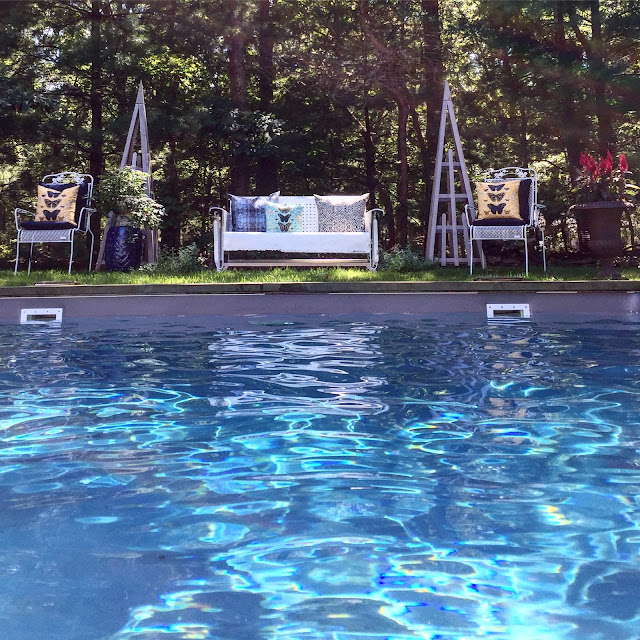Friday's Why In Design Series: part 2 the perserverance of the timeless Paisley motif
The roots and staying power of
the classic Paisley pattern
interior design Amanda Kyser
Calypso paisley bedding
classic yet still fresh paisley printed batik and pillows
Lawrence Bullard interior design
photographer Tim Street Porter
Indian Paisley stamp
The Paisley pattern originated from Persia (India) and was first seen on woven Kasmir scarves (as far back as the 11th century), gold jewelry and traditional Indian silk saris. The design is said to have been shaped after the mango fruit, and there are references to the motif in the Hinduism religion. However, the name was taken from the town of
Paisley in Scotland. This town became a textile center in the 18th century, then later famous for it's colorful paisley patterned shawls.
Nicknames for the pattern over the years have been, “Persian Pickles” or “Welsh Pairs” and its distinctive, defining qualities
are of a large tear drop shape.
a more modern use of paisley fabric
Beacon Hill fabric's Lampas
below:
paisley pattern on
a rug in Clarence House in London.
The former residence of the Queen Mother, the house was commissioned by
William IV and built between 1825~ 1827 by John Nash
During
the 17th Century the French started manufacturing paisley motifs in
their textiles,
and soon the rest of Europe and England followed suit.
Popularity grew tremendously and the motif was produced on Jacquard looms,
but when the technology allowed the pattern to be printed on wool and cotton
in many colorways the popularity soared and made it less expensive.
and soon the rest of Europe and England followed suit.
Popularity grew tremendously and the motif was produced on Jacquard looms,
but when the technology allowed the pattern to be printed on wool and cotton
in many colorways the popularity soared and made it less expensive.
using paisley
Barclay Butera
Why does Paisley have timeless appeal?
Today, the pattern is considered a classic aesthetic often seen mixed in traditional spaces and layered with other patterns. When used in a large scale it can feel modern as well. I believe Paisley has timeless appeal because it is quite versatile.
Barclay Butera
Why does Paisley have timeless appeal?
Today, the pattern is considered a classic aesthetic often seen mixed in traditional spaces and layered with other patterns. When used in a large scale it can feel modern as well. I believe Paisley has timeless appeal because it is quite versatile.
as seen in Domino Magazine
a modern use of Paisley.
two of my favorite paisley patterns from Schumacher:
I like the clean aesthetic of the paisley pattern on one color background
glimpses of designer
Charlotte Moss's work for a NYC client
layering with paisley to create a sophisticated, uncluttered yet traditional look
photographer Tria Giovan
published Verenda Magazine
Happy Nesting
XO Tamara
research sources:


















